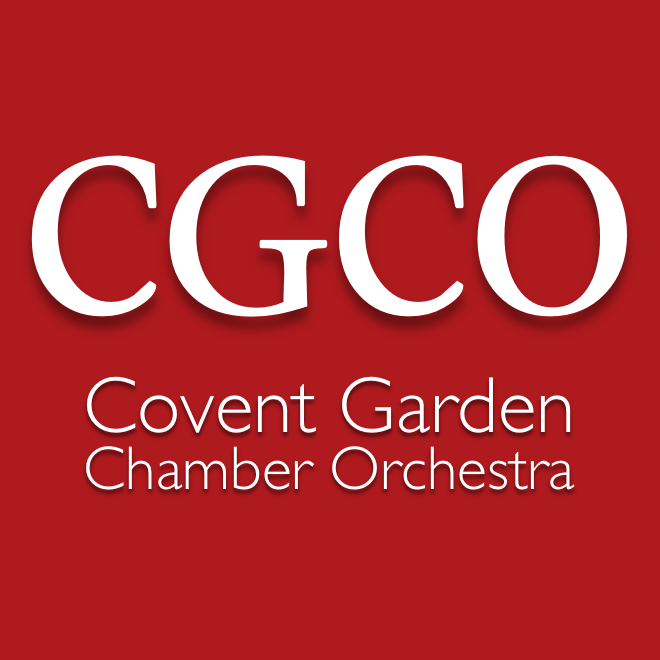CGCO welcomes conductor Johann Stuckenbruck and soloist Bar Zemach to our second concert of the 2024-25 season
Programme
Smetana: The Bartered Bride Overture
R. Strauss: Horn Concerto No.2
Tchaikovsky: Symphony No.6 “Pathetique”
Tickets
Just select the ticket types and quantity and click ‘Add’:
Adult tickets: £18
Concessions: £13
Under 16: £8
Once you’ve selected your tickets, click on the shopping cart icon in the top menu to complete your purchase
Gift Card: The Perfect Present
Give the gift of music to someone you love! We now offer 4x gift card values that can be used to purchase tickets, drinks or even orchestra subscriptions for members. Click the button to find out more.
Smetana: The Bartered Bride Overture
Smetana's The Bartered Bride Overture is a vibrant and colourful orchestral piece that serves as a prelude to the opera of the same name. Composed between 1863 and 1866, it encapsulates the spirit of Czech folk music while illustrating the themes of love and social dynamics.
The overture begins with lively and playful motifs that introduce the main characters and their relationships. It features a spirited opening, characterised by buoyant rhythms and bright orchestration, reflecting the joy and energy of the story. Woodwinds play a significant role, weaving in folk-like melodies that evoke a sense of national identity, which is central to Smetana's work.
As the piece progresses, contrasting sections emerge, showcasing the emotional depth of the narrative. The development features moments of tension and resolution, mirroring the complexities of romance and negotiation present in the opera's plot. The return of the opening themes brings a sense of unity, culminating in a triumphant conclusion that celebrates the themes of love and community.
Overall, Smetana's The Bartered Bride Overture is a masterful orchestral display, rich with thematic material and emotional resonance, setting the stage for the story that unfolds in the opera.
R. Strauss: Horn Concerto No.2
The Horn Concerto No. 2 in E-flat major, Op. 132, by Richard Strauss is a significant work in the horn repertoire, composed in 1942. It showcases the virtuosic capabilities of the horn while reflecting the mature style of Strauss's later years.
The concerto is structured in three movements: the first movement, Allegro, features a lively and bright character, with the horn engaging in a dialogue with the orchestra. The second movement, Andante, provides a lyrical contrast, exhibiting the horn's warm, expressive qualities as it weaves a delicate melody that evokes introspection. The final movement, Allegro, returns to a more energetic and playful spirit, characterised by rhythmic drive and intricate interplay between the horn and orchestral forces.
Throughout the concerto, Strauss employs rich harmonies and innovative orchestration, enhancing the horn's timbral nuances. The work is notable for its integration of lyrical passages with technical demands, making it a profound exploration of the horn's expressive range.
Overall, Strauss's Horn Concerto No. 2 stands as a vital contribution to the horn repertoire, balancing technical prowess with emotive depth. Its combination of vitality and lyrical beauty continues to captivate audiences and performers alike.
Tchaikovsky: Symphony No.6 “Pathetique”
Tchaikovsky's Symphony No. 6, known as the “Pathetique,” is a profound exploration of human emotion and one of the composer's most celebrated works. Composed in 1893, shortly before Tchaikovsky's death, the symphony delves into themes of despair, longing, and ultimately, acceptance.
The symphony is structured in four movements, effectively creating a journey through contrasting emotional landscapes. The first movement opens with a brooding introduction, marked by a haunting theme that sets a melancholic tone. As the movement progresses, the music builds in intensity, showcasing Tchaikovsky's masterful orchestration and ability to convey deep feeling.
The second movement, a lively waltz, offers a fleeting moment of joy that contrasts sharply with the surrounding darkness. This movement may evoke a sense of nostalgia, as the themes dance gracefully yet remain tinged with an underlying sentiment of sadness.
The third movement returns to a more solemn mood, with an emphasis on lyrical beauty and introspection. Tchaikovsky employs rich harmonies that evoke poignant imagery, inviting listeners to reflect on the complexities of life and love.
The symphony concludes with a final movement that is perhaps the most striking. Starting quietly, it gradually unfolds into a heart-rending exploration of resignation and peace. The music intensifies, only to ebb away into a gentle, almost tragic stillness. The unresolved ending leaves a lingering sense of unease and contemplation, prompting listeners to ponder the emotional depths Tchaikovsky so eloquently expressed.
Tchaikovsky’s “Pathetique” stands as a testament to his genius and remains a pivotal work in the orchestral repertoire, resonating with audiences through its emotional profundity and the universal experiences of joy, sorrow, and acceptance.
Johann Stuckenbruck
Following successful debuts across Europe and North America, British-American conductor Johann Stuckenbruck is fast establishing himself as an outstanding talent on the international stage.
Stuckenbruck’s upcoming highlights for 2024-2025 include débuts with Orchestre National de Bretagne, Orchestre Symphonique du Saguenay Lac-Saint-Jean, and the Portland Chamber Orchestra as well as returns to Opéra Royal de Wallonie-Liège, the Royal Academy of Music, Salomon Orchestra, and the Covent Garden Chamber Orchestra.
St. Peter’s Church, Notting Hill
The venue for our concert is St Peter's Church in Notting Hill, a building of notable architectural quality, listed Grade II*. The interior of the building is very elaborate, with many of the pillars boasting gilded capitals.
To get to St Peter’s Church using public transport, the closest Tube Station is Notting Hill Gate. The closest Bus Stop is PT-Stanley Gardens and PS-Chepstow Villas.
On-street parking outside the church is limited to RBKC resident permit holders, with some prepay spaces also available.
Address: 90 Kensington Park Road, London, W11 2PL



